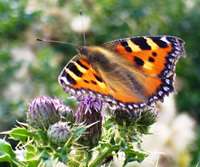Thousands inspired by nature through OPAL citizen science

From recording over a million bugs to discovering that gardens are a haven for earthworm diversity, the successes of one of the largest national citizen science projects, Open Air Laboratories (OPAL), are highlighted in the Community Environment Report published today.
More than half a million people, including the public and community scientists, have taken part in the OPAL project, which is led by Imperial College London and supported by a Big Lottery Fund grant. Partners of the project include the Natural History Museum.
By carrying out nature surveys, people have gathered important biodiversity data, the report highlights, including information from deprived urban areas that have never before been sampled by scientists.
Many participants were carrying out nature surveys for the first time and just over half of the surveys were carried out by young people, fulfilling one of the project's aims to inspire a new generation of environmentalists.

The Community Environment Report reveals some of the findings so far from OPAL surveys. In the 5 years that OPAL has been running, over 25,000 sites across England have been mapped via the surveys, which have given scientists plenty of new wildlife data and insights into the condition of many of our green spaces.
Soil and earthworms
Results from the OPAL Soil and earthworm survey found that domestic gardens were hotspots for earthworms, having more worms and an average higher number of species, compared to other habitats such as woodlands. Museum scientists worked with partners to develop an identification guide to British earthworm species, of which there are more than 25. The most widely distributed earthworm recorded was the redhead worm found in most habitats.
Counting bugs
People have recorded over a million invertebrates as part of the OPAL Bugs Count survey, which is conveniently available as an android and iPhone app, the Museum's first. Even in heavily built-up areas, the results showed that soft surfaces such as bare soil, lawns and fallen leaves were the most popular habitats for bugs, demonstrating how important gardens are.

Species such as the tree bumblebee were recorded just as frequently in the towns as in the countryside. However, others like the small tortoiseshell butterfly were more frequent in the countryside.
Air quality and lichens
Lichens have revealed the impact of pollution on the environment through the OPAL Air survey. Lichens with some resistance to pollutants from car exhausts and intensive agriculture were found to thrive on oak trees close to roads with heavy traffic and cultivated fields. Much lower levels of lichens sensitive to pollutants were recorded, even in the countryside.
Provided by Natural History Museum















